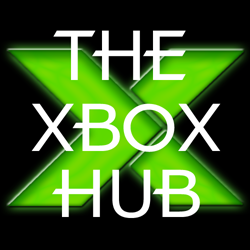The Twilight Zone television series was quite a hit back in the early 1960s, to the point where it’s been revived twice since then. Even a real-world pinball table based on the TV series came to fruition at one stage, which has now received the enhanced digital treatment by Zen Studios for Pinball FX. It’s the Williams Pinball: Twilight Zone table and it’s time to see whether this classic offering has crossed over successfully.

The Twilight Zone table was first released in 1993 under the Bally publishing arm and was part of the SuperPin range. Designed by Pat Lawlor – known for table creations such as The Addams Family, Safecracker, and FunHouse – Twilight Zone is a widebody machine, allowing more space on the playfield to include gimmicks and toys. Surely, a table that’s absolutely packed with ideas is going to be a brilliant addition to the Pinball FX library, right?
Well, the overall layout doesn’t do the Williams Pinball: Twilight Zone table any favours because it really is pretty crammed with lanes, ramps, bumpers, and flippers. There are two sets of flippers here you see, as the additional two are in place higher up in order to whack the ball towards those parts that would ordinarily be hard to reach. It’s far too easy to lose the ball however, often due to it hitting a stuck out edge which usually diverts the trajectory towards the gap between the flippers. There’s also a kick-out hole that fires the ball back at you with high velocity, which is fairly difficult to predict in terms of timing.
On the plus side though, Twilight Zone is packed with features. Most of these are displayed on the centre of the lower playfield, surrounding the infamous door seen in the opening credits of the TV series. There are fourteen panels to light up and successfully doing so will initiate the Wizard Mode. Some required tasks to complete the panels can be tough such as shooting specific targets like the clock and the orbit, while others are simply a case of reaping rewards for a limited time once a panel feature commences. Whichever you’re attempting, these are the best ways to rack up those big scores.

Sadly, what you won’t find are any tasks or objectives that are overly exciting or adventurous compared to the original concepts created by Zen Studios. There is a neat idea involving the inclusion of a Powerball, which is lighter than the average ceramic ball and zips around the table at some speed. Otherwise, don’t expect too much innovation; just remember the Twilight Zone table is three decades old.
For fans of The Twilight Zone, it’s great to hear a snippet of the instantly recognisable theme tune at the beginning of proceedings and see little references hidden in the artwork. It’s also rather cool that a 3D model of Robby the Robot – the sci-fi icon who appeared in numerous episodes – has been integrated into the enhanced version of the table. To be fair, the visual effects and enhancements really add to the experience and inject a bit more fun into the table.
Williams Pinball: Twilight Zone for Pinball FX is undoubtedly a classic that’s fairly enjoyable to play, but it definitely emphasises quantity over quality in regards to features. While the door-related objectives provide a relatively simple – but welcome – route to high scores, compared to the modern offerings the ideas are underwhelming. The ease in which a ball is lost to the drain, thanks to the layout, isn’t great either. I do feel though that the tie-ins to the TV show and the optional modern enhancements will pave over some of the potential downsides at least.
Given the steep price point at just under a tenner, it’s hard to recommend the Williams Pinball: Twilight Zone table for Pinball FX to anyone except ardent fans of the TV show or those with love for the classic machines.
